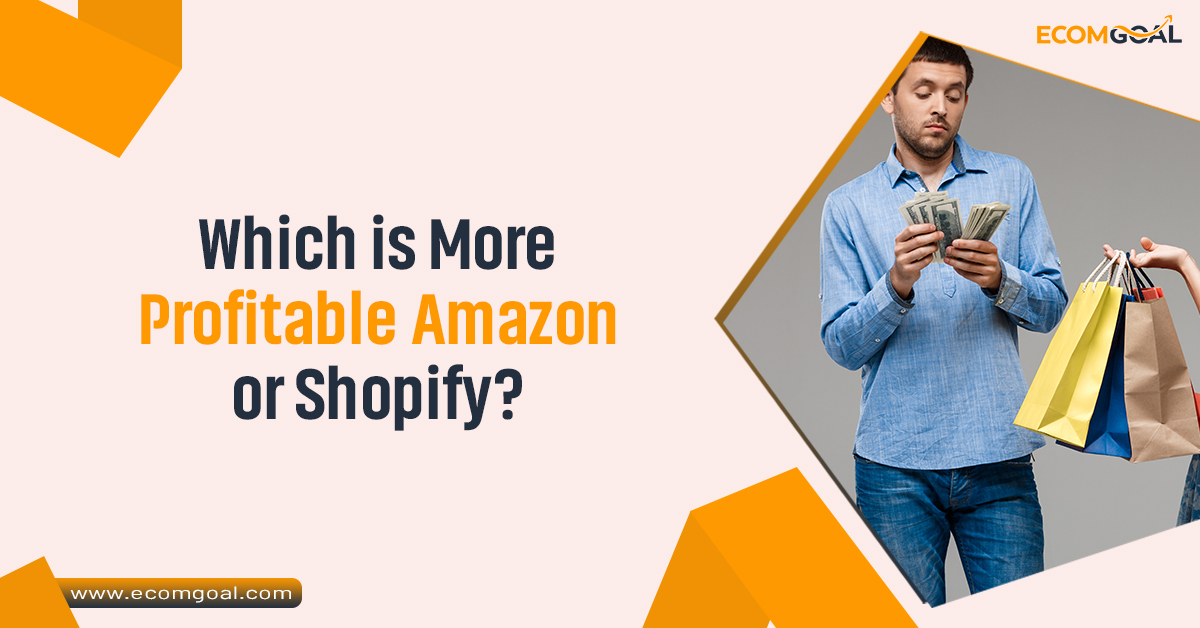
Which is more profitable amazon or shopify? launching an online business is more accessible than ever, and two platforms stand out as leaders: Amazon and Shopify. While both provide robust solutions for selling online, they operate in different ways, which can significantly affect profitability. Understanding which of these platforms will be more profitable for your business depends on various factors, such as business goals, product type, and marketing strategies. Let’s dive deep into an analysis of Amazon and Shopify to help you make an informed decision.
Overview of Amazon and Shopify
Amazon is the world’s largest online marketplace, with over 300 million active customer accounts and over 1.9 million small businesses selling on its platform. As a marketplace, Amazon provides sellers with access to a vast, built-in customer base and handles much of the logistics and customer service, especially if you choose their Fulfillment by Amazon (FBA) service. However, sellers on Amazon are subject to strict guidelines and must navigate intense competition.
Shopify, on the other hand, is a platform that allows you to build and manage your own online store. While it doesn’t come with a pre-existing customer base like Amazon, Shopify offers unmatched flexibility and customization. It allows you to own your brand, establish a unique customer experience, and control all aspects of your business from product selection to marketing.
Cost Structure and Profit Margins
Amazon Costs
Amazon’s fee structure includes various costs that impact your overall profitability. For example:
- Referral Fees: Amazon charges a referral fee per sale, usually 8% to 15% of the selling price, depending on the product category.
- Fulfillment Fees: If you use Amazon’s FBA service, there are additional fulfillment fees that cover storage, packing, and shipping. This is convenient but adds to your costs.
- Monthly Subscription Fee: Amazon’s Professional Selling Plan costs $39.99 per month. There’s also an Individual Plan with no monthly fee, but you pay $0.99 per item sold.
These fees can add up quickly and can significantly eat into your profit margins, especially for lower-priced products. However, Amazon’s high-volume potential can offset these fees for high-demand products.
Shopify Costs
Shopify’s cost structure is simpler than Amazon’s, but there are still expenses to consider:
- Monthly Subscription Fee: Shopify offers several pricing tiers, with the Basic plan at $39 per month and the Advanced plan at $299 per month. These plans include a variety of features, and you can choose based on your needs.
- Transaction Fees: If you use a third-party payment gateway, Shopify charges an additional transaction fee, usually around 2.0% to 2.9%. However, using Shopify Payments can help reduce these fees.
- App and Theme Costs: Many of Shopify’s features require third-party apps, which can add anywhere from $5 to $50 per month per app.
With Shopify, you have more control over your expenses and can potentially keep a larger portion of each sale, making it easier to achieve higher profit margins if you market your store effectively.
Customer Reach and Brand Recognition
1. Amazon’s Massive Audience
One of the biggest advantages of selling on Amazon is access to it’s enormous customer base. Amazon handles an average of 200 million unique visitors each month in the U.S. alone. Selling on Amazon can provide almost instant exposure to a vast audience without spending much on advertising.
However, because Amazon controls the customer relationship, it’s harder to establish your brand. Amazon’s guidelines discourage communication with customers outside of its platform, making it difficult to build loyalty or remarket to past customers. You’ll also be competing with Amazon’s private-label brands and other sellers who may offer similar products.
2. Shopify’s Brand-Building Potential
Shopify allows you to create a branded website that can differentiate you from competitors. You have full control over your website’s design, content, and user experience, enabling you to build a loyal customer base. Because you own the customer relationship on Shopify, you can collect customer emails, send marketing messages, and create a unique brand experience.
The downside is that you have to drive your own traffic through social media, email marketing, and SEO. This can be time-consuming and requires additional expenses, but over time, these efforts can lead to sustainable growth and profitability.
Control and Flexibility
Amazon’s Marketplace Constraints
Selling on Amazon means you must follow their strict guidelines and policies. From pricing rules to product listing requirements, Amazon controls much of the selling experience. Additionally, if Amazon believes that your product violates its policies, your listing may be suspended, disrupting your business. Some sellers also face the risk of having their successful products copied by Amazon itself or other sellers.
Shopify’s Independence
With Shopify, you have complete control over every aspect of your store, including branding, product pages, and checkout. You’re free to create a unique user experience and run your business with fewer restrictions. This flexibility can be an asset, especially if you want to experiment with marketing strategies, customer loyalty programs, or seasonal discounts.
Fulfillment and Shipping
Amazon FBA
One of Amazon’s significant advantages is its Fulfillment by Amazon (FBA) service. With FBA, Amazon takes care of storage, packing, and shipping, which saves you time and operational costs. FBA also allows you to offer Prime shipping, which can lead to higher conversion rates, as many shoppers prefer fast, reliable delivery.
However, FBA can be costly, especially if your products are bulky or have a lower profit margin. You’re also dependent on Amazon’s fulfillment system, which can be a disadvantage during peak times when warehouses may be overwhelmed.
Shopify Fulfillment Network
Shopify has been investing in its own fulfillment network, although it’s not yet as extensive as Amazon’s FBA. However, Shopify allows for easy integration with various third-party logistics providers, enabling you to choose the fulfillment option that best fits your budget and shipping needs. With Shopify, you have the flexibility to manage fulfillment in a way that aligns with your profitability goals.
Marketing and Advertising
Amazon Advertising
On Amazon, you can use Amazon Sponsored Products and Amazon Sponsored Brands to promote your listings. While this can drive significant sales, the advertising cost per click (CPC) has risen due to increased competition. Advertising on Amazon is essential for visibility, but it can also be costly, especially for competitive niches.
Shopify Marketing
Shopify offers a wide range of options for marketing, from social media ads to content marketing and email campaigns. Although you don’t have access to a built-in audience, you can create targeted campaigns on platforms like Google and Facebook to drive traffic to your Shopify store. By building an effective SEO and social media strategy, you can reduce ad costs over time and drive organic traffic, which can improve profitability.
Final Verdict: Which is More Profitable Amazon or Shopify?
There’s no one-size-fits-all answer, as the profitability of Amazon versus Shopify depends on your business model, product type, and long-term goals:
- Choose Amazon if you prioritize rapid sales and value the convenience of FBA and access to a massive customer base. Amazon’s fees are higher, but its scale can bring in substantial revenue quickly.
- Choose Shopify if you want control over your brand, customer experience, and long-term growth. While it may take longer to drive traffic and build your customer base, Shopify’s independence and branding potential can lead to higher margins and long-term profitability.
In the end, which is more profitable Amazon or Shopify some businesses may find it beneficial to use both platforms, leveraging Amazon for volume and visibility while building brand equity and customer loyalty on Shopify. Whether you choose Amazon, Shopify, or a combination, understanding your business needs and financial goals will help you maximize profitability.

Hello, I am an E-commerce Expert with extensive experience providing services to numerous e-commerce brands and individuals since 2017. My primary areas of expertise include the Amazon, Walmart, and Shopify marketplaces. Linkedin
